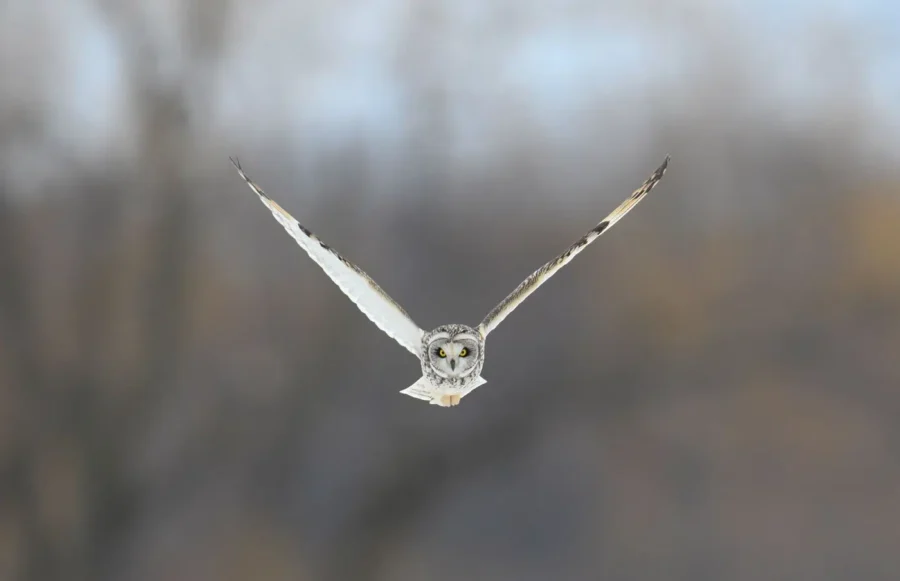The landscape of contemporary art is a dynamic terrain, marked by a constant dialogue between tradition and innovation, the sacred and the profane, the gallery and the street. Within this fluid environment, artists often find themselves at a crossroads, compelled to redefine their relevance amidst shifting paradigms. Mark T. Smith emerges as a singular figure within this complex tapestry, whose trajectory defies easy categorization. His work, vibrant and multifaceted, forms a compelling counternarrative to certain currents of postmodern thought, advocating for an art deeply connected to the human experience while permeating the very fabric of daily life. He embodies a unique synthesis, having achieved widespread commercial recognition without compromising a profound, almost spiritual, artistic vision.
Smith’s journey and philosophy invite a critical examination of the arts role in society not merely as an object of elite contemplation, but as a vital, ennobling force accessible to all. His career, marked by public commissions and introspective studio practice, offers a captivating case study in how a contemporary artist can bridge the perceived divide between artistic integrity and broader cultural engagement, ultimately enriching the discourse on what art means and how it impacts the human condition.
The Formative Odyssey New York and the Birth of a Style
Born in Wilmington, Delaware, in 1968, Mark T. Smith began his artistic journey in 1986 by moving to New York City to study at Pratt Institute in Brooklyn, where he earned his Bachelor of Fine Arts degree. This period was crucial for honing his figuredrawing skills and deepening his understanding of what it meant to be an artist. His artistic prowess and mental outlook were profoundly shaped by the New York art scene of the late 1980s, an era characterized by a vibrant fusion of traditional and emergent influences. This environment, replete with graffiti art, hiphop culture, and the ubiquitous visual language of advertising, became integral to his artistic vocabulary.
Smith’s visual language matured into a unique synthesis the time honored traditions of draftsmanship and observational art, learned at Pratt Institute, merged with the distinctly modern influences of graffiti, hiphop, postpop, and the vast sea of advertising and commercial visuals. This blend enabled him to create vibrant, complex artworks. The time in New York was not merely a phase of absorbing influences; it was a crucible where seemingly disparate elements of classical training versus street art, commercial visuals versus fine art were forged into a singular, hybrid style. The vibrant New York City art scene was not just a backdrop but an active component of his artistic DNA, forcing a dialogue between high and low culture. This suggests a conscious, intellectual process of synthesis that goes beyond mere absorption.
His style has been compared to JeanMichel Basquiat and Willem de Kooning, placing him in a lineage of artists who embraced raw energy and expressive brushwork while maintaining a connection to figuration. His work integrates elements of graffiti art, hiphop culture, and advertising, a testament to his ability to weave diverse cultural threads into a cohesive aesthetic. This synthesis positions Mark T. Smith as an archetypal contemporary artist who, by integrating mass cultural elements with traditional techniques, naturally questions and expands the boundaries of fine art. His work implicitly challenges hierarchical distinctions within the art world, making it accessible and relevant to a broader audience while retaining intellectual rigor. This foundational blend of influences is crucial to understanding his later philosophical stance on arts public function and his neoclassical counterrevolution.

Between Studio and Global Stage Commerce as a Catalyst
After graduating from Pratt Institute, Mark T. Smith quickly established himself, securing a significant commission from the Walt Disney Company at the age of 22 for a poster announcing Disney World’s 19th birthday. This marked the beginning of his meteoric rise, introducing his dynamic style to a wide audience. His corporate patronage expanded to include major brands such as MTV, Pepsi, New York Knicks, Rolling Stone, Sony, UB40, Chrysler, Showtime, Nickelodeon, VH1, ATT, and Budweiser. A defining moment was the Absolut Smith campaign for Absolut Vodka in 1996, which brought him national attention.
Perhaps most famously, in 2003, Smith created three paintings Drive Thru Man, Mothman, and Empty for Taco Bell, which were reproduced on stretched canvas to adorn their restaurants. These works gained a growing cult following, with copies being stolen from restaurants, appearing on resale platforms like eBay, and even being recreated in the Metaverse. This engagement with highprofile commercial projects was not simply a matter of financial gain or mainstream acceptance. Smith articulates a clear philosophy: the primary purpose of art is to ennoble the public and integrate it into daily life. His commercial works thus become a conscious vehicle for this philosophy, a means of democratizing art and challenging its traditional elitist confines. This implies a deliberate rejection of the art for arts sake mentality in favor of a more socially engaged practice.
Mark T. Smith explicitly states his belief that artwork has a primary function to ennoble the public. He argues that for art to create awareness and appreciation, it must be connected to and integrated into our daily lives. This philosophy drives his conscious decision to seek opportunities to display and apply art in a manner that reaches as many people as possible, while maintaining control over quality and content. The phenomenon of the stolen Taco Bell paintings serves as a powerful, almost ironic, validation of Smith’s philosophy. The fact that these massproduced art prints became desirable enough to be stolen and even recreated in the Metaverse suggests a grassroots democratic appropriation and appreciation of art in unexpected places. This demonstrates art’s ability to transcend its original context and deeply penetrate popular culture, creating a unique form of cultural significance that few gallerybound works achieve. It underscores a unique form of transformation of arts perceived value.
He positions his work as a neoclassic counterrevolution to the emotionally vapid and endlessly selfreferencing postmodern thought and artwork. For Smith, art should offer something greater than mere criticism, something that climbs inside of you and illuminates something within, leaving viewers breathless, amazed, and wondering. This counterrevolution is not merely a stylistic preference but a critical philosophical stance. He is not just creating art; he is actively participating in a discourse about arts purpose and impact. By emphasizing classic skills of drawing and painting and a desire to ennoble the public, he positions himself as an advocate for art that evokes emotion, wonder, and a deeper connection to the human soul, as opposed to art he perceives as overly intellectualized or ironic for its own sake. This stance creates a compelling tension in his practice. While embracing contemporary influences like graffiti and advertising, his underlying motivation is a return to fundamental artistic values: beauty, emotional resonance, and public engagement. This makes him a fascinating figure in contemporary art, simultaneously participating in and critiquing its dominant trends, and pointing a way for art to reclaim a more central, meaningful role in collective identity and experience.

The Philosophy of Creation From the Known to the Unknown
Mark T. Smith’s artistic process is characterized by two distinct approaches: the known and the unknown. The known involves a clear idea of the final form, with a linear process of observation, research, and detailed sketches serving as a map for the composition. This method is often used for commissioned works requiring client approval. Conversely, the unknown approach is a Big bang creation, starting with a blank canvas and spontaneous application of colors or marks, leading to an abstract pathway. This path is filled with danger, filled with choices at every turn, by happy accidents and complete failures that yield insight, often resulting in breakthrough works that advance his material processes. Smith notes the existence of smaller pathways that connect these two approaches, unifying his extensive body of work.
This duality goes beyond mere technique; it reflects a deeper philosophical stance on creativity and existence. The known process embodies discipline, control, and the conscious pursuit of a vision, akin to navigating life with a clear objective. The unknown, with its dangers, happy accidents, and failures that yield insight, represents embracing serendipity, the unconscious, and the transformative power of unexpected experiences. This suggests that his artistic practice is a microcosm of his philosophy of life. The bridges between conscious and unconscious in his process become a unifying force for his artworks, mirroring the human experience of navigating between intention and fate. This makes his artistic method a powerful commentary on transformation not just of materials, but of ideas and the self, through a continuous dialogue between control and surrender. This depth of process elevates his work beyond mere aesthetics to a profound existential inquiry.
Drawing is fundamental to Smith’s practice; it is described as the most direct, raw manner to present an idea and felt to be as natural as breathing, joyful, mysterious, and transcendent. It is the starting point for every idea, project, or expression, whether for a commission or personal exploration.
Smith’s work is an experiential exploration of the human drama, from the personal right through to the archetypal. He explores themes of transitions and journeys, from self-discovery to the realm of religious archetypes and insights. His evolving visual language reflects his philosophy of remaining open to daily influences from nature, travels, research, and urban environments. He consciously integrates Jungian archetypes into his art, such as the bull representing the masculine experience, the horse’s majestic power, strength, and the dragon blurring the lines of reality, otherworldly forms. This engagement with universal symbols aims to create art that is as universal as possible, translating diverse ideas and cultures into his unique vision. The use of Jungian archetypes is a deliberate strategy to tap into the collective unconscious, allowing his art to resonate with viewers on a primal, universal level that transcends cultural or individual specifics. This implies a desire to explore shared human identity and experience rather than focusing solely on personal narratives. The bull, horse, and dragon are not just symbols but conduits for exploring universal aspects of strength, masculinity, power, and the blurring of reality that speak directly to the human condition. Through the conscious deployment of these archetypes, Mark T. Smith positions his contemporary art as a bridge between ancient, universal narratives and the modern experience. This approach provides viewers with an access point to understanding the nature, context, and content of his artworks, making them profoundly relatable and intellectually engaging. It is a subtle yet powerful way to explore identity and transformation on a grand, collective scale, grounding his vibrant contemporary style in timeless human themes.

Resilience and Renaissance An Artist in Flux
Between 2014 and 2023, Mark T. Smith did not exhibit publicly, instead maintaining a private studio practice. This period, particularly around 2009, was marked by personal challenges and the aftermath of the 2008 financial crisis. A significant personal challenge was a lifealtering stroke that left him temporarily paralyzed. This experience encompassed losing control of his own body and a slow process of rebuilding strength and creativity. This phase was not merely a hiatus but a profound transformation of his artistic and personal identity. The stroke, in particular, forced a loss of control, which, in the context of his known vs unknown creative process, adds a layer of lived experience to his artistic philosophy. His resilience and artistic rebirth suggest that adversity deepened his understanding of the human condition and imbued his work with new meaning.
In 2020, after nearly a decade of semi-hiatus from the art world, Mark T. Smith reignited his public pursuit of his artistic passion with renewed vigor. This resurgence included new commissions, such as an album cover for UB40. By 2023, he returned to fulltime creative work, relocating his studio to Jacksonville, Florida, and is scheduled to have his first solo exhibition at Mills Gallery in Orlando in May 2025. His return to full creative output is described as a story of resilience, vulnerability, and artistic rebirth.
Smith’s unwavering commitment to his craft despite formidable obstacles underscores the enduring nature of artistic passion. His return to public exhibition and prolific creation at age 55/56 demonstrates that for him, the journey of exploration and creation is an endless horizon. He also dedicated his energies to imparting the transformative power of creativity to future generations, continuing his longstanding academic contributions at institutions like Parsons School of Design and Pratt Institute. This commitment to education highlights his belief in arts’ broader societal impact. This personal journey elevates the cultural significance of his work. An artist who has literally experienced the fragility and transformation of body and mind can imbue his art with a unique authenticity and depth, making his exploration of the human drama even more resonant. It positions him as an artist whose life itself is a testament to the enduring power of creation and the human spirit’s capacity for renewal.
Mark T. Smith’s oeuvre stands as a vibrant testament to an artist’s unwavering commitment to his vision, navigating the complex currents of contemporary art with intellectual rigor and profound emotional depth. From his formative years in the crucible of New York’s dynamic art scene, where he forged a unique visual language from classical draftsmanship and urban iconography, to his pioneering integration of art into commercial realms, Smith has consistently challenged conventional boundaries. His neoclassical counterrevolution is not merely a stylistic choice but a philosophical imperative, a call for art to reclaim its role as an ennobling force, deeply connected to the human spirit and accessible to all. Through his dual creative process, a dance between the known and the unknown and his profound engagement with Jungian archetypes, he invites viewers on a journey of self-discovery and universal human experience, exploring the essence of identity and transformation.
In an era often characterized by fleeting trends and digital ephemera, Mark T. Smith’s enduring resilience, particularly in the face of personal adversity, underscores the timeless power of artistic creation. His work, whether on a gallery wall or in a fastfood establishment, consistently seeks to illuminate the profound within the everyday, making art a permanent partner in our lives. As he embarks on new chapters of creation, Mark T. Smith continues to shape the discourse on what contemporary art can be a dynamic, transformative force that speaks to the soul, bridges divides, and reminds us of the shared human condition in an ever-evolving world. His legacy lies not just in the canvases he paints or the sculptures he casts, but in the profound way he has championed art as a vital, accessible, and deeply human endeavor.









